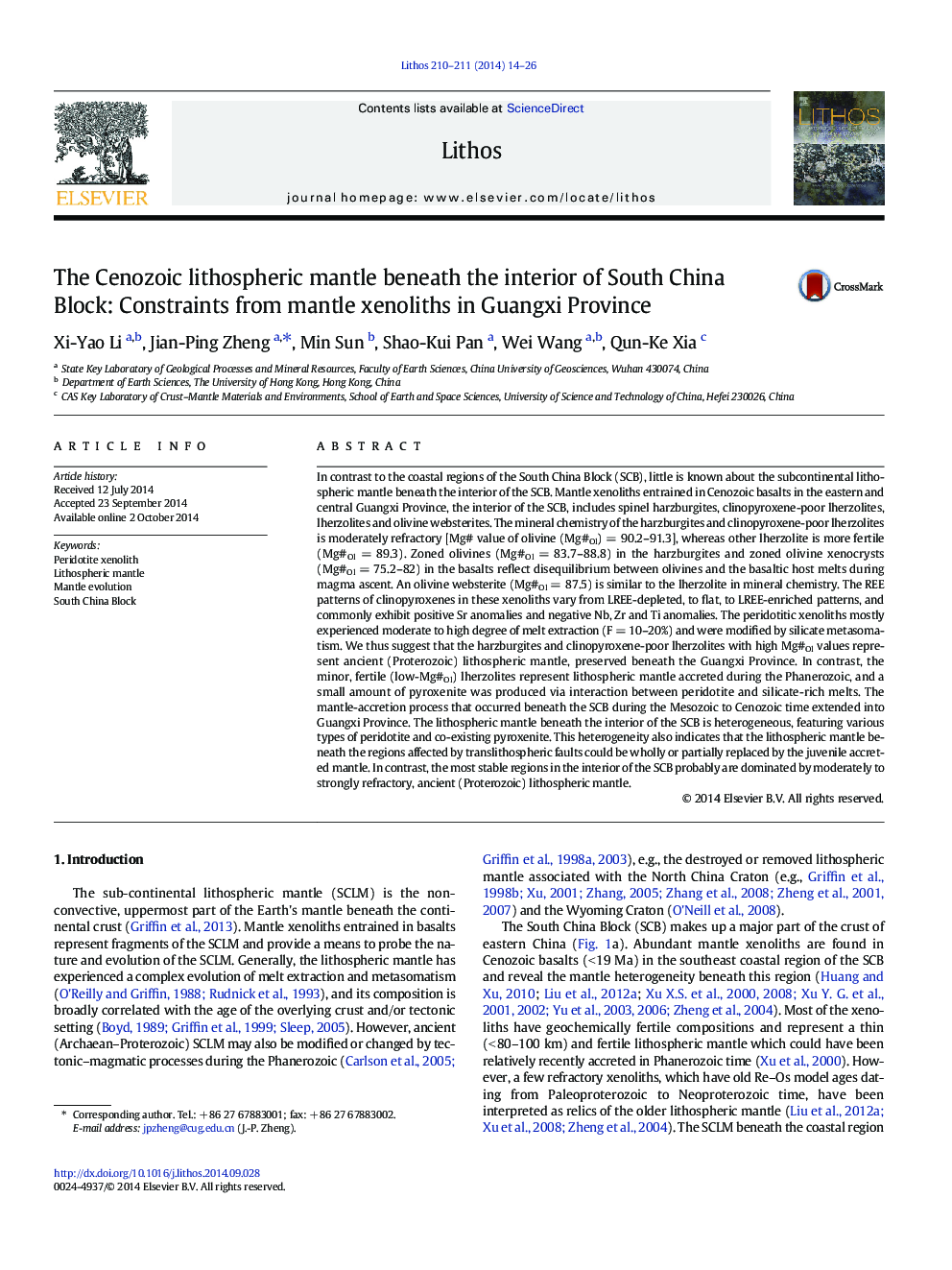| Article ID | Journal | Published Year | Pages | File Type |
|---|---|---|---|---|
| 4715762 | Lithos | 2014 | 13 Pages |
•Peridotite and pyroxenite xenoliths are found in the Cenozoic basalts from the interior of South China.•Moderately refractory, ancient lithospheric mantle is dominant.•Thinning and accretion of the lithospheric mantle beneath South China extend to its interior during Mesozoic–Cenozoic•The olivine websterite has the origin of peridotite–melt interaction involving silicate melts.
In contrast to the coastal regions of the South China Block (SCB), little is known about the subcontinental lithospheric mantle beneath the interior of the SCB. Mantle xenoliths entrained in Cenozoic basalts in the eastern and central Guangxi Province, the interior of the SCB, includes spinel harzburgites, clinopyroxene-poor lherzolites, lherzolites and olivine websterites. The mineral chemistry of the harzburgites and clinopyroxene-poor lherzolites is moderately refractory [Mg# value of olivine (Mg#Ol) = 90.2–91.3], whereas other lherzolite is more fertile (Mg#Ol = 89.3). Zoned olivines (Mg#Ol = 83.7–88.8) in the harzburgites and zoned olivine xenocrysts (Mg#Ol = 75.2–82) in the basalts reflect disequilibrium between olivines and the basaltic host melts during magma ascent. An olivine websterite (Mg#Ol = 87.5) is similar to the lherzolite in mineral chemistry. The REE patterns of clinopyroxenes in these xenoliths vary from LREE-depleted, to flat, to LREE-enriched patterns, and commonly exhibit positive Sr anomalies and negative Nb, Zr and Ti anomalies. The peridotitic xenoliths mostly experienced moderate to high degree of melt extraction (F = 10–20%) and were modified by silicate metasomatism. We thus suggest that the harzburgites and clinopyroxene-poor lherzolites with high Mg#Ol values represent ancient (Proterozoic) lithospheric mantle, preserved beneath the Guangxi Province. In contrast, the minor, fertile (low-Mg#Ol) lherzolites represent lithospheric mantle accreted during the Phanerozoic, and a small amount of pyroxenite was produced via interaction between peridotite and silicate-rich melts. The mantle-accretion process that occurred beneath the SCB during the Mesozoic to Cenozoic time extended into Guangxi Province. The lithospheric mantle beneath the interior of the SCB is heterogeneous, featuring various types of peridotite and co-existing pyroxenite. This heterogeneity also indicates that the lithospheric mantle beneath the regions affected by translithospheric faults could be wholly or partially replaced by the juvenile accreted mantle. In contrast, the most stable regions in the interior of the SCB probably are dominated by moderately to strongly refractory, ancient (Proterozoic) lithospheric mantle.
